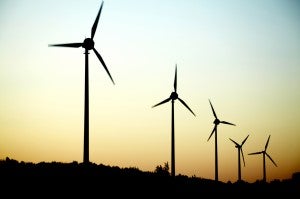This commentary was originally posted on the Texas Clean Air Matters blog.
Prior to the August recess, the U.S. Senate Finance Committee passed a 55-item tax extender package known as the Family and Business Tax Cut Certainty Act of 2012. The bill is now up for consideration in the House Ways and Means Committee. Included in this package is a one-year extension of the Production Tax Credit (PTC) for wind energy. The PTC is sound economic, energy and environmental policy, and our congressional leaders would do well to support the package and the PTC extension when it comes up for a final vote.
Texas’ current success in wind energy development has been assisted by the PTC. The PTC provides a 2.2 percent tax credit per kilowatt hour of energy generated to private wind investors if their wind farms are developed, constructed and are producing. This program has increased private investment and development of wind energy, and has lead to an expansion of jobs throughout our country, but particularly in rural Texas.
With Texas being the national leader in wind installations and a manufacturing hub for the wind industry, wind farms have appeared throughout our state, and related jobs are in high demand. The wind industry provides quality and high-paying jobs, gives our state an economic boost and provides environmental benefits. Texas is the first state to reach 10,000 megawatts of wind energy installations, which power the equivalent of 2.7 million homes. The wind industry also provides land lease payments to local landowners in Texas to the tune of $31 million annually.
Nationally, the wind energy industry supports 75,000 direct and indirect jobs, more than 400 manufacturing facilities, and is responsible for 35 percent of all new energy generation since 2007 – more than coal or nuclear energy combined.
The PTC and the tax extender package are not guaranteed to pass either the House or Senate. As uncertainty in this industry continues, developments and projects in Texas and around the country are at risk if Congress does not act quickly. EDF is asking Congress to support a tax credit that continues to help the wind energy industry grow into self-sufficiency.
Please contact your member of Congress today and ask for their support of the Production Tax Credit and the Family and Business Tax Cut Certainty Act.

















